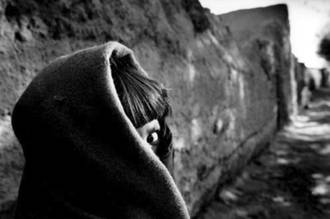Archives
HUMAN TRAFFICKING IN ASSAM
Human trafficking is a disgrace upon the face of humanity and strict laws are the dire need of the hour to eradicate this nefarious trade. Although it would not be proper to restrict human trafficking only to trading of human flesh, there is an undeniable connection between the two. In India, several domestic laws have been enacted over the years in order to address this issue. 
The seriousness of the problem in the context of Assam can be gauged from the fact that there is a rapid increase in the number of missing persons in the state. On the 3rd of March 2007, the Daily Agradoot published a report which stated that during the period from 2001 – 2006, as many as 4000 people of the state have gone missing. What happened to those people? Did they fall prey to traffickers? In the early months of 2004, the National Human Rights Commission (NHRC) carried out a detailed investigation to comprehend the growing menace of human trafficking in India and put forward certain recommendations to counter the problem. The report entitled ‘Action Research on Trafficking in Women and Children in India’ drew out a very grim picture of Northeast India as far as the status of human trafficking in this region is concerned. According to the report, “The situation in the Northeastern part of the country demands special attention. Trafficking of women and children in this region cuts across the different states and extends beyond national boundaries, involving Bangladesh, Myanmar and other countries.” Women and children from Assam are trafficked to various parts of the country such as Delhi, Mumbai, Haryana, Gujarat, etc and are exploited sexually or otherwise. 
However, effective solutions to the problem can not be arrived at until and unless the true nature of the phenomenon is comprehended. The problem is that human trafficking is concealed in nature; which makes it difficult to extract reliable data regarding the number of victims that have actually been trafficked and the number of gangs and unscrupulous employment agents operating at various levels and from different places. United Nations Development Programme, Regional Centre in Colombo (UNDP RCC) had commissioned a Rapid Assessment Study (RAS) in the year 2007 to study the causes, effects, magnitude and dimensions of human trafficking and HIV / AIDS in the six countries of Asia. The findings of the study are quite alarming. Moreover, India has a huge market for human traffickers as it acts as a source, transit and destination country for women, men and children trafficked for the purpose of sexual and labour exploitation. Some common trends and patterns have come up on the basis of study which throws light on the common vulnerability factors. According to the study, poverty is one of the root causes of human trafficking. Moreover, in India, there is visible evidence of the poorer states being the source of human trafficking and illegal migration. The South Asian countries do not have proper employment opportunities; therefore, people tend to migrate in search of better livelihood opportunities. Gender based discrimination and violence are also responsible for aggravating the problem of human trafficking. As far as the 2001 census is concerned, it reflects the growing disparity in the male – female ratio in India; with 949 females against 1000 males. This makes women of poorer states more vulnerable to abuse and exploitation, as they lag behind their male counterparts in the educational field and are economically dependent. In fact, lack of education is a major cause for human trafficking and according to RAS, South Asian countries have lower levels of literacy rate. Caste, ethnicity and social marginalisation are other important factors as 15 million children in India work as bonded labourers and most of them belong to the scheduled castes. The Rapid Assessment Study clarifies the fact that regions witnessing armed conflict are prone to the malice of human trafficking. In fact, clear mention is made of the fact that the Northeastern regions of India which are infected with insurgency are more vulnerable to human trafficking, especially of women and children. Environmental factors such as floods and draughts and the impact of globalisation resulting in the disappearance of traditional modes of income are a few causes of human trafficking in the South Asian countries.
From the above discussion, it becomes clear that human trafficking is not just a legal issue which can be stopped by implementing strict laws. A plethora of developmental issues is attached to it. Human trafficking can not be tackled until issues such as socio – economic inequality, education, human rights, unemployment and health care are sincerely taken into account. The disheartening fact is that human trafficking is a gross violation of human rights. It unlawfully takes away from the victim his / her right to live with dignity and respect and the right to move freely.
As mentioned earlier, Assam has witnessed large scale displacement of people in the past few decades. Moreover, there is an increase in the number of missing people cases, particularly of young women and children. Youths from various parts of Assam are trafficked to the richer parts of the country to work as forced labourers in the fish packaging industry, agricultural farms and industrial units and as sex workers. In fact, young girls from Assam are put on sale in the brothels of other parts of the country for a few thousand rupees. Young men from this region are often trafficked for organ transplantation. However, due to non availability of data and lack of systematic research in this field, it is not possible to form an exact scenario of the human trafficking racket in the state. However, in recent years, the police have made several arrests in relation to human trafficking. As far as the data divulged by the Assam state police is concerned, a total number of 98 cases have been registered under the Immoral Trafficking (Prevention) Act, 1956, during the period between 2004 and 2007. There is a small decline in the number of cases, from 28 cases in 2004 to 23 cases in 2007. During this period, Kamrup district registered the highest number of 49 cases, followed by Dhubri district with 12 cases, Kokrajhar with 7 cases and Lakhimpur with 5 cases. Apart from this, a total number of 279 persons have been arrested during the above mentioned period. There was a decline in the number of arrests made with 92 arrests being made in 2004 to that of 72 arrests in 2007. However, this data can be regarded as only the tip of the iceberg. Moreover, of the total number of cases registered by the police in 2004 – 2007, as many as 73 cases are still pending. Justice delayed is justice denied. The lengthy judicial procedures and the time required to deliver justice can only lead to the denial of justice to the innocent victims.
Global Organisation for Life Development (GOLD), a Guwahati based NGO stated that during the period from May 2006 to March 2007, it had taken part in 20 rescue opreations and rescued 50 victims of human trafficking. From March 2007 till date, it had rescued 38 victims in total. It provided legal aid to 29 victims though all the cases are still pending. A majority of the victims hail from the Char areas, Dhubri, Bonaigaon, Kokrajhar and Kamrup districts. The average age of the victims is 12 to 22 years of age and they generally belong to poor families and have low levels of literacy. According to the NGO, the young girls are trafficked to the Northern parts of the country where they are pushed into prostitution or are used as surrogate mothers.
In fact, the route of the trafficking displays that the movement of the trafficked victims is from the poverty stricken Northeastern states to the comparatively wealthy states of North India and other metopolises. Moreover, the interpretations of the police and the above mentioned NGO show that the districts of Assam record a greater number of human trafficking cases, especially in the Kokrajhar, Dhubri, Lakhimpur and Kamrup districts which are economically less developed and where the youth do not get good employment opportunities. In a way, the trend and pattern shown by human trafficking in Assam seem to bear similarities with the pan South Asian common trend that came up in the Rapid Assessment Study (RAS) conducted by UNDP. Assam is basically an import based state and it has to be dependent on the wealthier states of the country for basic ammenities such as food and water supply. A large portion of the state government revenue is lost in importing goods from other states and this only results in the economic backwardness of the state. With the urban population standing at 12.9% of the total population of the state, a huge chunk of Assam’s population is based in the rural areas and of these people, a large number are living below the poverty line. A poor stratum of the society is obviously more vulnerable to the menace of trafficking. As stated before, another factor responsible for human trafficking is the lack of employment. It has been found that up to October 2004, there were an estimated 16.15 lakh job seekers in the state. Though the number of enemployed people is on the rise, the government has failed to provide adequate jobs to the youth. This fact has turned youth. This fact has turned Assam into a ripe hunting ground of bogus employment agents and human traffickers who lure the gullible youth with false promises of employment, only to turn them into victims of trafficking.
Furthermore, Assam shows a disparity in the gender ratio, with 932 females against 1000 males. This inequality results in the degrading status of women folk in the society. There is an increase in the instances of violence against women who are marginalised in the public domain, making them soft targets for human trafficking and other forms of sexual abuse. In fact, the human rights violation against women and children are more registered in areas that witness armed conflict and insurgency. Conflict aggravates the process of displacement of people for better possibilities of a livelihood. The ethic assertion, language movement, Assam movement and various other armed conflicts are responsible for making Assam a disturbed state. The Assam Tribune, a leading daily of Assam had published a report on the 31st of January 2005 which showed that among the Northeastern states, Assam has registered the highest number of insurgency related cases, right from the killing of civilians to kidnappings for ransom. Political disturbances in Assam have made its poorer people more vulnerable to human trafficking. Moreover, most of the victims of human trafficking are generally illiterate or semi – literate, who have little or no knowledge about the evils of human trafficking. Assam has a literacy rate of 63.35% against the national literacy rate of 64.84%. Due to the lack of proper education and awareness on the issue, unscrupulous employment agents can easily coerce their victims by showing them false documents and certificates.
Another major reason behind human trafficking is that Assam is severely affected by natural calamities which lead to large scale migration of the people to metropolises. According to a report published in the Assam Tribune on the 5th of July 2005, an estimated 3,86,476 hectares of land in the state has been lost due to erosion and this is around 7% of the total land mass of the plains districts of Assam.
Eradication of such a problem needs careful and genuine effort and the socio – economic factors must be taken into account. Hoewever, on the brighter side, several NGOs and self help groups have been established in the region that are working for the rehabilitation of the victims and are keeping vigilance on the sensitive areas in order to contain the problem. The NGO Global Organisation for Life Development is working in this field. According to the NGO, which has a shelter home named ‘Swadhar’ in Guwahati; the rehabilitation process includes providing medical treatment and counseling to the victims. The NGO is also helping the victims to be self – reliant by providing them 20 month training programmes on cutting, weaving and beauty parlour courses. The NGO is also working towards spreading awareness on human trafficking in the different villages of Assam. Their awareness programme includes meeting Panchayat members and women groups of the villages and forming committees to look into the human trafficking incidents.
The menace of human trafficking can not be controlled unless the NGO’s working in this field and the Government agencies work sincerely towards social and economical development of the downtrodden. Police on the other hand should be viglant at the ground level and keep a track of the present status of the problem in Assam. On the other hand, over the years, the Government has introduced several employment generation schemes – Swarnajayanti Gram Swarojgar Yojana, Special SGSY, Sampoorna are some of them. However, the Government should see to it that the various employment generation schemes introduced by it are properly implemented without any corruption or malpractice so that the village people and the unemployed actually benefit from them. The major impediment towards containing the problem of human trafficking is improper enforcement of laws along with the inadequate and ineffective policies and organisational structures. Even good legislations become ineffective and meaningless if not implemented in a strict manner.
Human trafficking is a multi dimensional phenomenon and its prevention is possible if it is tackled by keeping in consideration the legal, social and economic aspects related to it.

